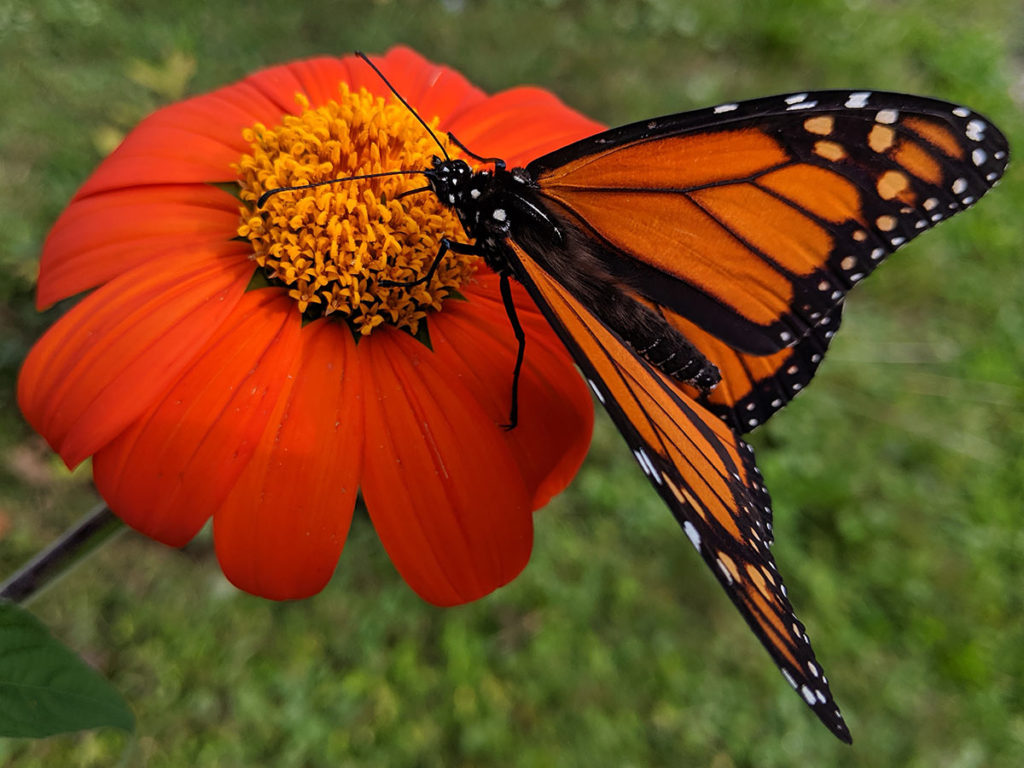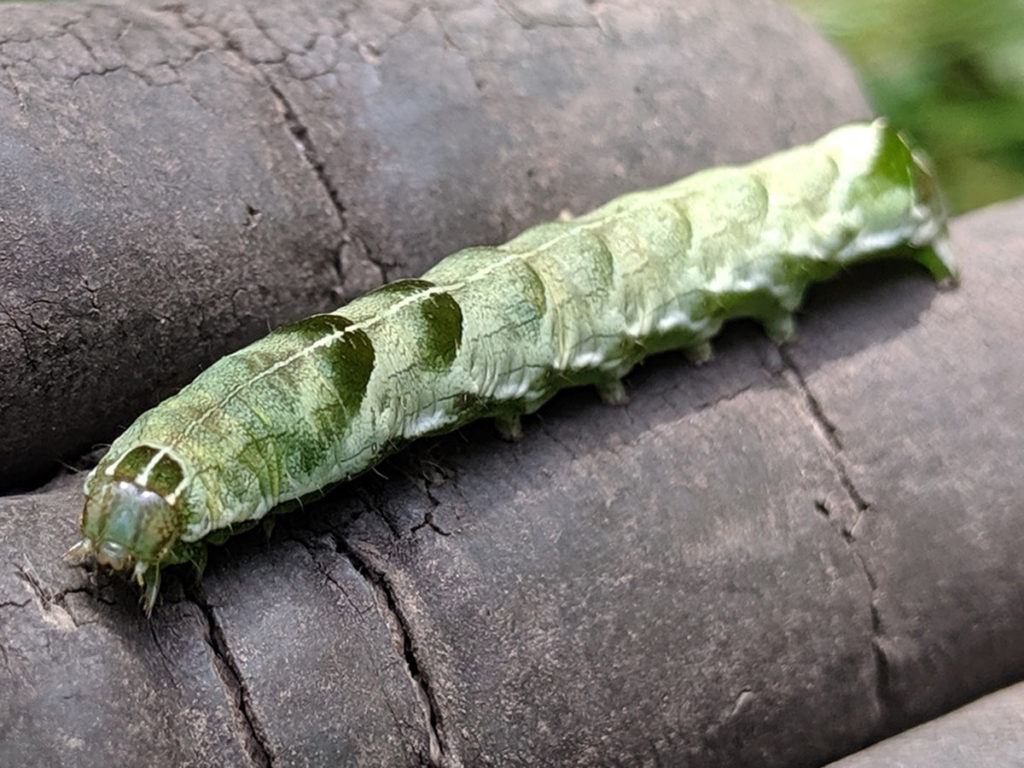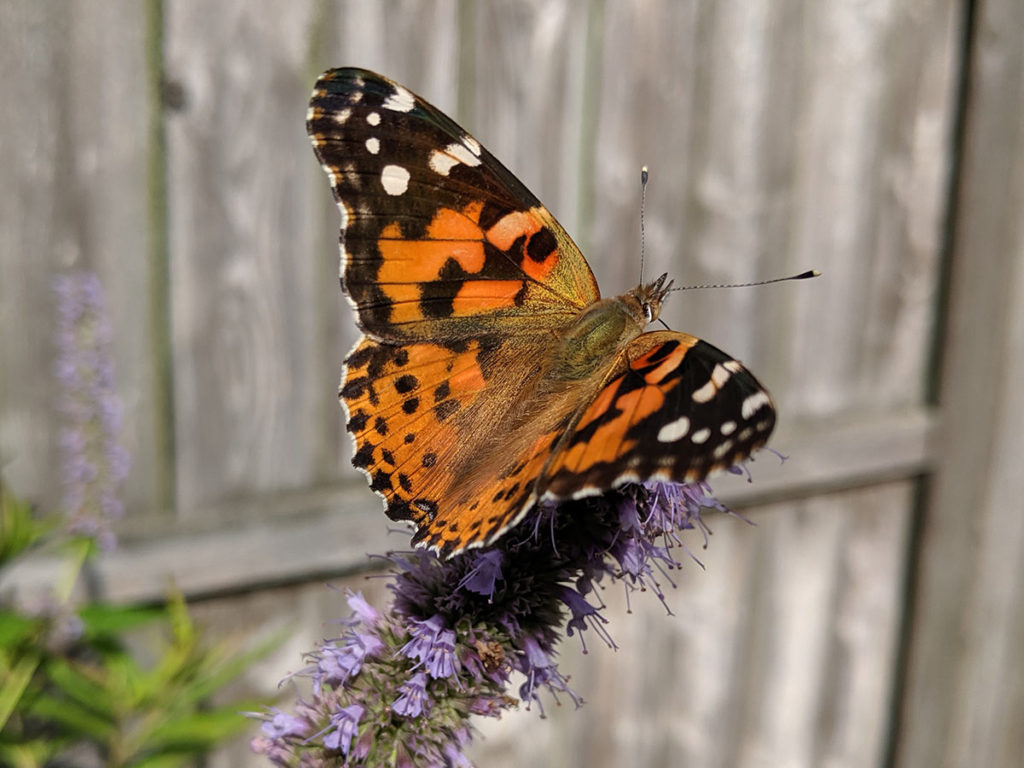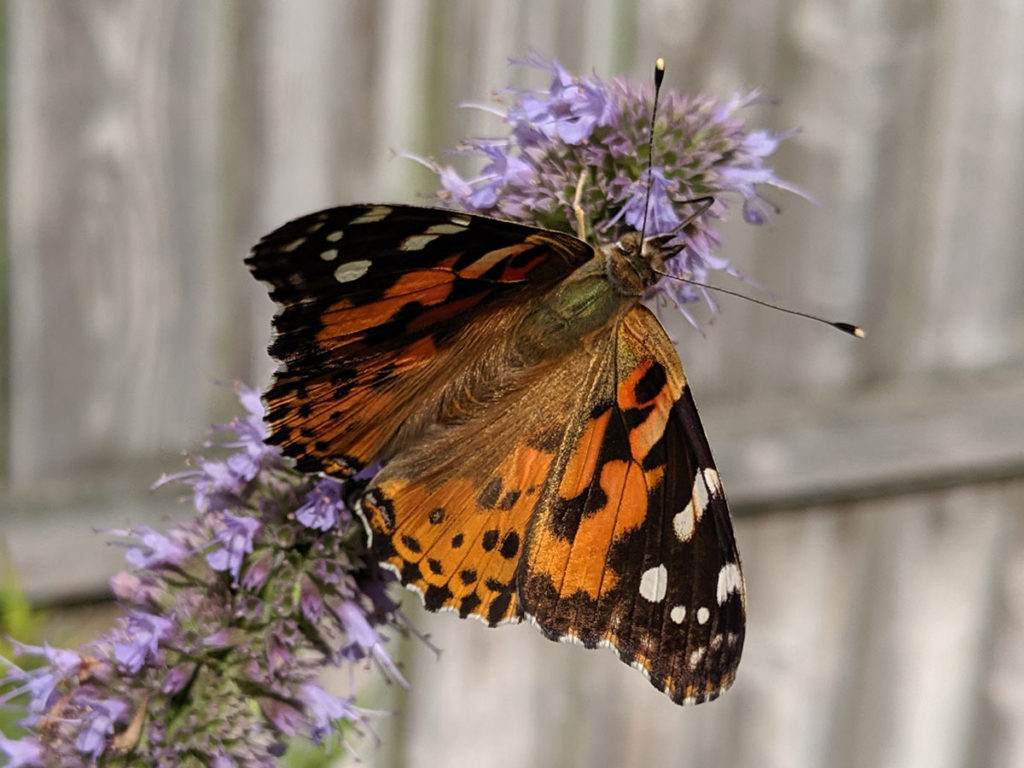This Labor Day weekend has been a gardening marathon. Mom G is visiting and helping a frantic gardener (hint: it’s me) tick off many to-do-before-winter tasks. While we were working in the garden, we came across other workers going about their days.
Out on a stand of Mexican Sunflower (Tithonia diversifolia) near the alley, this lady monarch was getting herself something to eat.

And as I was weeding around the plant, I found this little one on the ground. My neighbor had the day before bemoaned battling tomato worms, so I looked up that insect first. Nope, not this one. The closest I could find was a type of moth. If anyone knows, please leave a message in the comments.

Then there was this little one. This is the first time we’ve spotted this butterfly on the Lot. I can’t say enough how much I am enjoying the guide I scored at the gardening conference, Michigan Butterflies & Skippers. I PROMISE I am not being paid to promote this guide. It’s just really, really cool and helpful!

This butterfly is a Painted Lady (Vanessa cardui). Adults nectar on “blackberry, buttonbush, catnip, ironweed, knapweed, lupine, Labrador tea, blazing-star, and joe-pye-weed. Like the Question Mark butterfly, I found this one on the Anise Hyssop. But we do have a nice stand of Joe Pye Weed.

Caterpillars for the Painted Lady are found on thistle, burdock, aster, hollyhock, and common mallow. I don’t remember seeing any caterpillars as the guide describes, yellowish green mottled with black and having black spines. Apparently they are found in loose webbing on the host plant.